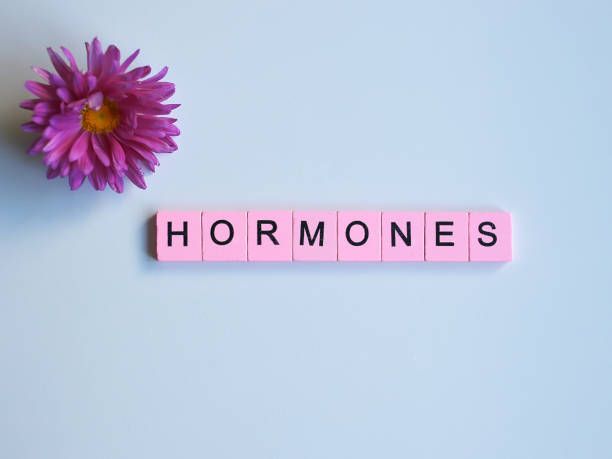Women’s Health and the Light Body: Circadian Rhythms, Hormones, and Cycles
Jun 27
Modern
women are living in cycles that don’t align with the natural rhythms their
bodies were designed for. Artificial lighting, digital work schedules, hormonal
birth control, and sleep disruption all interfere with a woman’s most vital
form of internal intelligence: her rhythmic harmony with light.
What if the daily light cycle—the rising and setting of the sun—wasn’t just about timekeeping, but about hormonal precision and overall vitality?
This article explores the deep, often overlooked link between sunlight, circadian biology, and women’s health. It’s not about hacking your hormones—it’s about listening to the body’s ancient language of light.
In our modern world of fluorescent lighting, late-night screens, and erratic schedules, it’s easy to forget that women’s health was once guided by the most ancient of metronomes: the sun, the moon, and the dance of light across the sky.
Today, many women struggle with irregular cycles, PMS, fertility challenges, thyroid and adrenal imbalances—not because they are broken, but because they are unsynced.
Light, as it turns out, is not just a source of illumination. It’s the conductor of hormonal harmony. And by reconnecting with it, we reclaim our rhythm.

Light as a Master Hormone Regulator
Your circadian system—a 24-hour internal clock—is entrained by light. In women, this clock sets the tempo not only for sleep and energy, but for reproductive hormones like estrogen, progesterone, luteinizing hormone (LH), follicle-stimulating hormone (FSH), and melatonin.
When light cues are disrupted:
When light cues are optimal:
- Morning sunlight boosts cortisol awakening response (CAR) → energizing you for the day and supporting thyroid health.
- LH and FSH pulses are strengthened → improving ovulation and cycle regularity.
- Melatonin is suppressed at dawn and rises at night → enhancing sleep and hormonal recovery.
When light cues are disrupted:
- Menstrual cycles become irregular.
- PMS, PMDD, and PCOS symptoms may worsen.
- Adrenal fatigue and thyroid sluggishness can set in.
“The sun doesn’t just light your path—it programs your
hormones and endocrine system."

The Lunar Connection and Menstrual Cycles
Many women report naturally syncing their menstrual cycle with the phases of the moon when removed from artificial light. Traditional cultures considered this normal—full moon ovulation, new moon menstruation.
While formal research is still emerging, a 2019 study published in Science Advances observed that some women’s menstrual cycles can synchronize with moon phases in light-pollution-free environments. This suggests that lunar light exposure may play a subtle yet potent role in regulating biological rhythms.
In a world where women’s cycles are often medicalized, honoring the role of light and rhythm becomes a radical act of reclamation.
Light Timing & Therapy for Hormonal Vitality
Low-level red and near-infrared light (600–900nm) has shown clinical promise for:
- Thyroid support: improving T3 conversion and reducing inflammation in Hashimoto’s patients.
- PCOS symptoms: reducing pelvic congestion and improving ovarian function.
- Adrenal repair: enhancing mitochondrial function, which supports cortisol regulation.
Research published in Lasers in Surgery and Medicine suggests red light may help with pelvic pain, endometriosis, and tissue healing.
Light Fasting & Syncing
- Avoid bright artificial light after sunset (especially blue light), to allow melatonin and progesterone to rise.
- Use dim amber/red lighting at night to preserve sleep quality and hormonal cascade.
- Practice 10 minutes of direct morning sunlight on the face, eyes (no glasses), and chest.

Light Therapy & Menstrual Cycle Regulation: How Long Does It Take?
Clinical studies consistently show that bright light exposure for 5–7 days in the follicular phase (around ovulation) can normalize cycle length in women with long or irregular periods within 1–3 menstrual cycles.
- Dewan et al. (1967, 1978) exposed women with irregular cycles (33–53 days) to ~235 lux for 5 nights during cycle days 14–17. Most participants saw cycle lengths shift into the normal range (29–35 days) immediately in the first or second cycle .
- Lin et al. (1990) confirmed this in 16 women—those receiving 235 lux exposure during sleep for three consecutive cycles experienced significant cycle shortening (~13 days), whereas placebo exposures did not.
Hormone Modulation: Bright morning light stimulates LH, FSH, and estradiol, encouraging follicle growth and ovulation — observed in a controlled trial by Danilenko & Samoilova (2007) .
Melatonin Suppression: Reduced melatonin via light exposure influences hypothalamic regulation of reproductive timing — seasonal studies show higher melatonin and LH in winter versus summer .
Ovarian Function Enhancement: In seasonal light conditions (winter vs. summer), follicle size and ovulation frequency increased, and cycles shortened by ~1 day .
Melatonin Suppression: Reduced melatonin via light exposure influences hypothalamic regulation of reproductive timing — seasonal studies show higher melatonin and LH in winter versus summer .
Ovarian Function Enhancement: In seasonal light conditions (winter vs. summer), follicle size and ovulation frequency increased, and cycles shortened by ~1 day .
| Step | Frequency |
| Morning Bright Light | Daily for 5–7 days starting early in follicular phase |
| Night-time Light Fasting | Minimize blue/bright light at night; use dim amber/red lighting |
| Red/PBM Therapy | A few times per week, especially premenstrually |

Light Therapy for Fertility and Hormonal Rebalancing
Emerging
clinical and case studies suggest red/near-infrared light therapy
(photobiomodulation, PBM) shows promise in improving fertility, even in cases
of age-related or unexplained infertility:
A 2024 study reported that weekly PBM (600–1000 nm) in 3 women with age-related fertility concerns led to reported healthy live births after IVF administration.
Reviews of Japanese research indicate that 830 nm near‑infrared light on the neck significantly improved pregnancy rates in previously infertile women, including spontaneous conception without IVF.
While these case reports are encouraging, larger randomized controlled trials are still needed to confirm efficacy and standardize protocols.
A 2024 study reported that weekly PBM (600–1000 nm) in 3 women with age-related fertility concerns led to reported healthy live births after IVF administration.
Reviews of Japanese research indicate that 830 nm near‑infrared light on the neck significantly improved pregnancy rates in previously infertile women, including spontaneous conception without IVF.
While these case reports are encouraging, larger randomized controlled trials are still needed to confirm efficacy and standardize protocols.
PCOS diagnosis
“I began stepping outside for 10 minutes of morning sun and switching to amber light at night. Within two cycles, my periods became more regular and I felt calmer in the days before my bleed.”
— Maya, 32
IVF support
"
After three months of consistent red light therapy over my pelvic area, combined with natural cycle charting, I conceived after two years of unexplained infertility.”
— Elena, 38
Postpartum support
“Postpartum, I felt so foggy and depleted. Using a red light wrap for my C-section scar and morning sun time with my baby helped me feel stronger and sleep better within weeks.”
— Sofia, 34, first-time mother
Postpartum and Hormonal Recovery
Red/near-infrared light also shows promise for postpartum healing and rebalancing. A review of perinatal depression studies supports bright light therapy as a safe, low-cost intervention with minimal risk .
Pilot data and animal studies suggest PBM during the postpartum period may aid:
Pilot data and animal studies suggest PBM during the postpartum period may aid:
- Wound and scar healing
- Hormonal re-regulation (e.g., prolactin for lactation)
- Mood support and reduction of postpartum blues
Timeline: When to Expect Change?
While robust clinical timelines are still being established, current evidence suggests.
Cycle regulation in women with irregular periods: noticeable change in 1–3 cycles with bright light (~235 lux) exposure during the follicular window.
Fertility outcomes with PBM have been reported in as little as weeks to months, particularly when used alongside IVF or natural cycles.
Postpartum mood and recovery appear to improve within days to weeks of initiating light therapy—though dosing schedules vary across studies.
Cycle regulation in women with irregular periods: noticeable change in 1–3 cycles with bright light (~235 lux) exposure during the follicular window.
Fertility outcomes with PBM have been reported in as little as weeks to months, particularly when used alongside IVF or natural cycles.
Postpartum mood and recovery appear to improve within days to weeks of initiating light therapy—though dosing schedules vary across studies.
| Goal | Timing & Dosage |
Cycle regulation |
Bright broad-spectrum (2000–2500 lux) 10–45 min daily, early to mid-follicular phase |
Fertility support |
PBM (600–1000 nm) –3x weekly, targeting ovaries or neck and thyroid |
Postpartum support | PBM + bright morning sunlight As needed for mood, lactation, wound healing |
Light therapy isn’t a guaranteed fix—but its deep resonance with reproductive and hormonal processes makes it a low-risk, empowering tool for women experiencing cycle irregularities, fertility challenges, or postpartum exhaustion.
Protocols that incorporate 120–2500 lux bright light and red/NIR PBM show the most promise—with results often appearing within 1–3 menstrual cycles, or days to weeks postpartum.

Alisa Vitti — “Cycle Syncing: Living in Tune with Your Hormones”
Citations
1. Li, Q. (2010). Effect of forest bathing trips on human immune function. Environmental Health and Preventive Medicine, 15(1), 9–17.
1. Li, Q. (2010). Effect of forest bathing trips on human immune function. Environmental Health and Preventive Medicine, 15(1), 9–17.
https://doi.org/10.1007/s12199-008-0068-3
2. Bratman, G. N., Hamilton, J. P., Hahn, K. S., Daily, G. C., & Gross, J. J. (2015). Nature experience reduces rumination and subgenual prefrontal cortex activation. Proceedings of the National Academy of Sciences, 112(28), 8567–8572.
https://doi.org/10.1073/pnas.1510459112
3. Hunter, M. R., Gillespie, B. W., & Chen, S. Y.-P. (2019). Urban nature experiences reduce stress in the context of daily life based on salivary biomarkers. Frontiers in Psychology, 10, 722.
https://www.ncbi.nlm.nih.gov/pmc/articles/PMC6540881/
4. Chevalier, G., Sinatra, S. T., Oschman, J. L., Delany, R. M., & Brown, R. (2012). Earthing (grounding) the human body reduces blood viscosity—a major factor in cardiovascular disease. The Journal of Alternative and Complementary Medicine, 19(2), 102–110.
https://doi.org/10.1089/acm.2011.0820
5. Wilson, E. O. (1984). Biophilia. Harvard University Press. (Foundational book on the biophilia hypothesis)
6. Lowry, C. A., et al. (2007). Identification of an immune-responsive mesolimbocortical serotonergic system: Potential role in regulation of emotional behavior. Neuroscience, 146(2), 756–772.
https://doi.org/10.1016/j.neuroscience.2007.01.067
(Supports mood improvement through exposure to soil-based bacteria like Mycobacterium vaccae.)
7. Pawlak, R. (2020). The effect of grounding (earthing) on human health: A review. Alternative Therapies in Health and Medicine, 26(S1), 8–16.
(Summarizes biological mechanisms behind grounding.)
Featured links
Get in touch
-
info@valeriechristina.com
-
valeriechristina.com
-
612-546-1951
Copyright © 2025
Coming Soon!
New Clinic Space
Opening June 1st 2025
Thank you!


